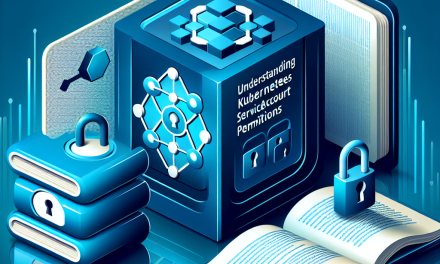Kubernetes has revolutionized the way we manage containerized applications, offering unparalleled scalability and flexibility. However, with great power comes the need for effective monitoring. Without comprehensive visibility into your Kubernetes clusters, managing workloads can become challenging. In this article, we will explore some of the best Kubernetes monitoring dashboards available, focusing on their features, benefits, and how they contribute to effective cluster management.
Why Kubernetes Monitoring Matters
Monitoring is essential for maintaining the health and performance of your Kubernetes clusters. With a multitude of services running simultaneously, you need tools that can provide insights into the following:
- Resource Utilization: Understanding CPU, memory, and storage usage across nodes and pods is crucial for efficient resource allocation.
- Performance Metrics: Monitoring application performance helps to identify bottlenecks and optimize delivery.
- Alerts and Notifications: Immediate alerts can prevent downtime by notifying you of system failures or resource shortages before they escalate.
- Troubleshooting: With detailed insights, developers can quickly diagnose and resolve issues, reducing mean time to recovery (MTTR).
Top Kubernetes Monitoring Dashboards
1. Grafana
Overview: Grafana is an open-source analytics and monitoring platform that integrates seamlessly with a variety of data sources, including Prometheus, InfluxDB, and Elasticsearch.
Key Features:
- Custom Dashboards: Users can create tailored dashboards to visualize metrics that matter most to their operations.
- Wide Data Source Support: Connects with various databases and monitoring systems, offering flexibility in data management.
- Alerts & Notifications: Set alerts based on specific metrics, received through channels like Slack, Email, and more.
Why Choose Grafana?: Grafana’s flexibility and visual appeal make it a top choice for teams looking to analyze a complex array of data effectively.
2. Prometheus
Overview: While primarily a metrics collection system, Prometheus provides powerful query capabilities and visualization options.
Key Features:
- Time-Series Data: Stores metrics in a time-series database, allowing for precise monitoring of changes over time.
- PromQL: A powerful query language designed to extract insights from collected metrics.
- Alerts: Integrated with Alertmanager for customized alerts based on defined thresholds.
Why Choose Prometheus?: As a Kubernetes-native solution, Prometheus fits seamlessly into the Kubernetes ecosystem, making it a popular choice for cloud-native environments.
3. Kiali
Overview: Kiali is focused on microservices observability within Kubernetes, particularly when using service mesh tools like Istio.
Key Features:
- Service Graph: Visualizes how services communicate, making it easier to identify potential issues in microservices architectures.
- Metrics and Health Checks: Provides insights into the health of services and their performance metrics.
- Configuration Validation: Confirms that configurations adhere to best practices.
Why Choose Kiali?: Kiali excels in scenarios where service meshes are involved, giving users a unique look at how microservices interact.
4. Kubecost
Overview: Kubecost focuses on cost monitoring and optimization within Kubernetes environments.
Key Features:
- Cost Allocation: Provides detailed insights on cost attribution to individual workloads and namespaces.
- Cost Optimization: Offers recommendations for rightsizing and cost-saving opportunities.
- Budget Management: Allows teams to set budgets and track spending in real-time.
Why Choose Kubecost?: As organizations increasingly focus on managing cloud expenses, Kubecost delivers essential insights for teams looking to optimize their spending.
5. Loki
Overview: Part of the Grafana ecosystem, Loki specializes in log data collection and visualization.
Key Features:
- Seamless Integration with Grafana: Easily correlates logs and metrics for in-depth analysis.
- Index-Free: Unlike traditional logging solutions, Loki is designed to be index-free, offering efficient storage of logs.
- Multi-tenancy: Supports monitoring across multiple teams or projects without data isolation.
Why Choose Loki?: If your monitoring strategy relies heavily on log data, Loki offers a lightweight, efficient solution to handle logs in conjunction with visualizations from Grafana.
Conclusion
Effective Kubernetes cluster management hinges on proper monitoring. Each of the tools discussed—Grafana, Prometheus, Kiali, Kubecost, and Loki—offers unique features and capabilities that can enhance visibility across different aspects of your infrastructure.
Choosing the right combination of monitoring tools will depend on your organization’s specific needs—be it for resource utilization, performance metrics, cost management, or log analysis. Investing in the right monitoring dashboards not only ensures operational excellence but also lays the groundwork for robust, scalable Kubernetes architecture that can adapt to varying workloads and demands.
For businesses leveraging Kubernetes, the time to implement effective monitoring is now. Equip your teams with these powerful dashboards to optimize your container orchestration and deliver outstanding services to your users. Happy monitoring!





